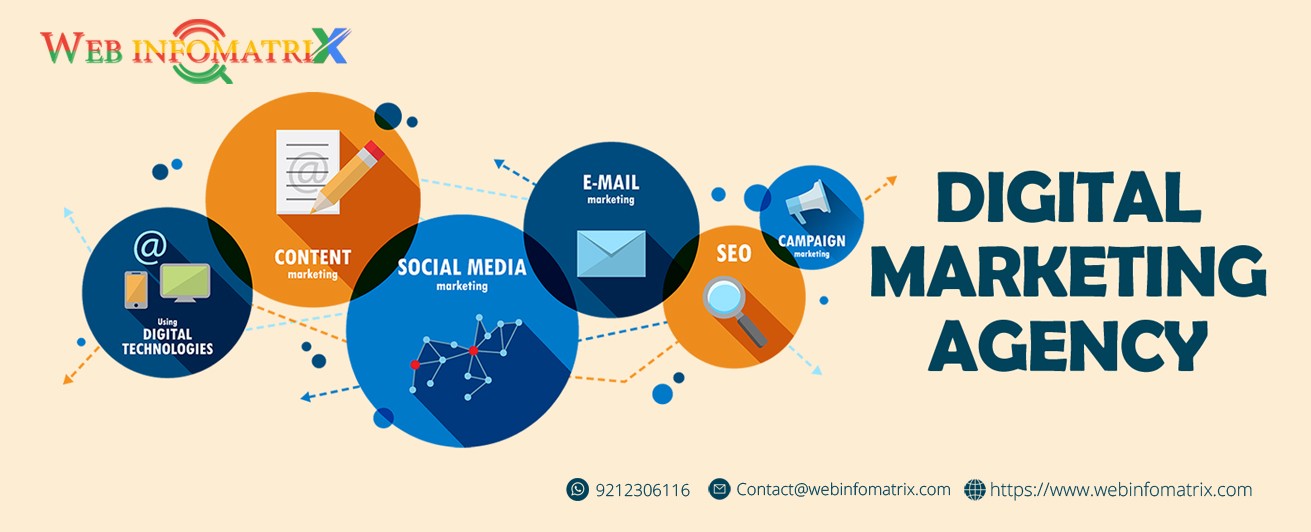Illuminating the Shadows: Crafting an Authentic Employer Brand by Embracing Your Downsides
Embracing your downsides and showcasing your efforts to address them can lead to a more engaged and committed workforce, as employees are more likely to stay with a company that values transparency and continuous improvement.

In today’s competitive job market, creating an authentic employer brand is more crucial than ever. An authentic employer brand is not just about showcasing your strengths and positive aspects; it’s also about embracing and transparently addressing your downsides. This approach not only builds trust but also attracts candidates who are genuinely aligned with your company’s values and culture. By illuminating the shadows and openly discussing your challenges, you can craft a more genuine and compelling employer brand that resonates with potential employees. This article delves into the significance of embracing your downsides and provides actionable strategies for integrating this approach into your employer branding efforts.
The Importance of Authenticity in Employer Branding
Authenticity is at the core of a strong employer brand. It’s not just about promoting what makes your company great but also acknowledging areas where there’s room for improvement. In a world where job seekers have access to a wealth of information through online reviews, social media, and networking, presenting an authentic picture of your organization is crucial. Candidates are increasingly seeking workplaces that are transparent and honest about their operations and culture. An authentic employer brand that embraces both strengths and weaknesses helps build credibility and trust, which are essential for attracting and retaining top talent.
The Risks of a Polished, Idealized Employer Brand
A polished and idealized employer brand might initially attract candidates, but it can lead to mismatched expectations and ultimately result in higher turnover rates. When companies only highlight their achievements and positive aspects, they may create unrealistic expectations among job seekers. This can lead to disappointment when employees encounter the less glamorous aspects of the workplace, such as organizational challenges or areas for improvement. Addressing both the positives and the negatives allows for a more realistic representation of what it’s like to work at your company, leading to better alignment between employee expectations and reality.
Benefits of Embracing Downsides
1. Building Trust Through Transparency
Embracing your downsides demonstrates a commitment to transparency and honesty. When you openly discuss challenges and areas for growth, you show that your company is willing to confront its imperfections and work towards improvement. This transparency fosters trust among potential candidates, who are likely to appreciate a company that is genuine about its journey and not just focused on presenting a flawless image.
2. Attracting the Right Candidates
Candidates who resonate with your company’s authentic representation, including its challenges, are more likely to be a good fit for your organization. By addressing your downsides, you attract individuals who are prepared to tackle those challenges and contribute to solutions. This can lead to a more engaged and motivated workforce that is aligned with your company’s mission and values.
3. Enhancing Employee Engagement and Retention
When employees are aware of and understand the challenges your company faces, they are more likely to feel a sense of ownership and commitment to overcoming those challenges. This understanding can enhance engagement and retention, as employees are more likely to stay with a company that values transparency and includes them in its journey toward improvement.
Strategies for Embracing Your Downsides in Employer Branding
1. Conduct a Comprehensive Internal Review
Start by conducting a thorough internal review to identify both the strengths and weaknesses of your organization. Engage employees at various levels to gather insights into areas where the company excels and where there are opportunities for improvement. This review should include aspects such as company culture, management practices, work-life balance, and career development opportunities.
2. Share Real Employee Experiences
Encourage employees to share their real experiences, including both positive and negative aspects of working at your company. Employee testimonials, blog posts, and social media content that highlight authentic experiences can provide valuable insights into your company’s culture and work environment. This approach not only adds credibility but also helps potential candidates understand the full picture of what it’s like to work for your organization.
3. Address Challenges Head-On
Don’t shy away from discussing the challenges your company is facing. Whether it’s a need for better communication, issues with work-life balance, or ongoing organizational changes, addressing these challenges openly shows that you are aware of and actively working to resolve them. Highlighting your commitment to addressing these issues demonstrates a proactive approach to continuous improvement and fosters trust among potential candidates.
4. Showcase Your Improvement Efforts
In addition to acknowledging your downsides, it’s important to showcase the efforts you are making to address and overcome these challenges. Share stories of how your company is working towards improvement, whether through new initiatives, changes in policies, or employee feedback programs. Highlighting these efforts shows that your company is committed to growth and development, and it provides candidates with a sense of the positive changes being implemented.
5. Create a Balanced Employer Brand Narrative
Craft a balanced narrative that includes both your company’s strengths and areas for improvement. Avoid focusing solely on the negatives but ensure that the downsides are presented alongside the positive aspects of working at your company. This balanced approach helps create a more accurate and relatable employer brand, which can resonate more effectively with potential candidates.
6. Use Data to Support Your Claims
Leverage data and metrics to support your claims about both your strengths and weaknesses. For example, use employee satisfaction surveys, turnover rates, and performance metrics to provide concrete evidence of areas where your company excels and where improvements are being made. Data-driven insights add credibility to your employer brand and help potential candidates make informed decisions.
7. Foster a Culture of Continuous Feedback
Encourage a culture of continuous feedback where employees feel comfortable sharing their thoughts and suggestions for improvement. Implement regular feedback mechanisms, such as surveys or focus groups, to gather insights from employees and address any concerns. A culture that values and acts on feedback demonstrates a commitment to continuous improvement and creates a more transparent and supportive work environment.
8. Highlight Employee Development Opportunities
Even if there are challenges within your organization, emphasizing opportunities for employee development and growth can help mitigate the impact of those challenges. Showcase training programs, mentorship opportunities, and career advancement paths that are available to employees. Demonstrating a commitment to employee development helps balance any downsides with the potential for personal and professional growth.
Communicating Your Authentic Employer Brand
Effectively communicating your authentic employer brand requires a thoughtful and strategic approach. Here are some tips for conveying your message:
1. Use Multiple Channels
Utilize various communication channels, such as your company website, social media platforms, and job postings, to share your employer brand narrative. Different channels reach different audiences, so using multiple platforms ensures that your message is seen by a diverse range of potential candidates.
2. Be Consistent
Maintain consistency in how you communicate your employer brand across all channels. Ensure that the messages about your strengths and downsides are aligned and accurately reflect your company’s values and culture. Consistency helps build trust and reinforces the authenticity of your employer brand.
3. Engage with Your Audience
Engage with potential candidates and current employees through interactive content, such as Q&A sessions, webinars, and live chats. This engagement allows you to address questions and concerns directly and provides an opportunity to showcase your company’s transparency and commitment to improvement.
4. Monitor and Respond to Feedback
Regularly monitor feedback from employees and candidates about your employer brand. Respond to comments and reviews, both positive and negative, in a constructive and professional manner. Addressing feedback demonstrates that you value input and are committed to continuous improvement.
Crafting an authentic employer brand by embracing your downsides is a powerful strategy for building trust and attracting the right talent. By acknowledging and addressing your challenges transparently, you create a more realistic and relatable representation of your organization. This approach not only enhances credibility but also fosters a stronger connection with potential candidates who are aligned with your company’s values and culture.
Embracing your downsides and showcasing your efforts to address them can lead to a more engaged and committed workforce, as employees are more likely to stay with a company that values transparency and continuous improvement. By illuminating the shadows and presenting a balanced view of your employer brand, you position your organization as an authentic and trustworthy workplace that stands out in the competitive job market.
FAQs: Illuminating the Shadows: Crafting an Authentic Employer Brand by Embracing Your Downsides
1. Why is embracing downsides important for crafting an authentic employer brand?
Embracing downsides is crucial for crafting an authentic employer brand because it builds trust and credibility with potential candidates. By acknowledging and transparently addressing both strengths and weaknesses, your company presents a more realistic picture of the work environment. This honesty helps attract candidates who are genuinely aligned with your organization’s values and are prepared to contribute to overcoming challenges, leading to better alignment and retention.
2. How can acknowledging weaknesses impact candidate attraction and retention?
Acknowledging weaknesses helps set realistic expectations for candidates, reducing the risk of mismatched expectations and subsequent turnover. Candidates who understand and accept the challenges are more likely to be engaged and committed, as they are aware of the areas where they can make a difference. This transparency helps build a more committed and aligned workforce, enhancing overall retention rates.
3. What are some effective strategies for identifying and addressing company weaknesses?
Effective strategies for identifying and addressing company weaknesses include conducting comprehensive internal reviews, gathering employee feedback through surveys and focus groups, and analyzing performance metrics. Once identified, address these weaknesses openly by sharing improvement efforts and progress. This approach demonstrates a commitment to growth and fosters a positive and transparent work environment.
4. How can employee testimonials help in embracing company downsides?
Employee testimonials provide authentic insights into both the positive and negative aspects of working at your company. By sharing real experiences, you offer potential candidates a balanced view of the work environment, which enhances credibility. These testimonials help build trust and provide a more accurate representation of your company’s culture and challenges.
5. What role does transparency play in building trust with potential candidates?
Transparency plays a crucial role in building trust with potential candidates by demonstrating honesty and openness about the company’s operations and challenges. When candidates see that a company is willing to address its weaknesses openly, they are more likely to trust that the organization values integrity and is committed to continuous improvement. This trust is essential for attracting and retaining top talent.
6. How should a company balance its strengths and weaknesses in its employer brand narrative?
A company should balance its strengths and weaknesses by presenting a holistic view of the work environment. Highlight both positive aspects, such as unique benefits and career development opportunities, and areas for improvement. This balanced narrative helps create a realistic and relatable employer brand, which can attract candidates who are aligned with the company’s values and are prepared to contribute to addressing challenges.
7. What are some common mistakes to avoid when addressing company downsides in employer branding?
Common mistakes to avoid include focusing solely on negatives without providing context or solutions, neglecting to showcase improvement efforts, and being inconsistent in messaging. It’s important to address weaknesses with a constructive approach, highlight ongoing efforts to resolve issues, and maintain consistency in how the company’s narrative is communicated across different channels.
8. How can data be used to support claims about company strengths and weaknesses?
Data can be used to support claims about company strengths and weaknesses by providing concrete evidence from employee satisfaction surveys, performance metrics, and other relevant sources. For example, using data on employee engagement levels or turnover rates can validate claims about areas for improvement and demonstrate the company’s commitment to addressing these issues.
9. Why is it important to foster a culture of continuous feedback?
Fostering a culture of continuous feedback is important because it encourages open communication and helps identify areas for improvement on an ongoing basis. When employees feel comfortable sharing their thoughts and suggestions, the company can address issues more effectively and demonstrate a commitment to creating a supportive and responsive work environment.
10. How can a company effectively communicate its authentic employer brand?
A company can effectively communicate its authentic employer brand by using multiple channels, such as the company website, social media, and job postings, to share a balanced narrative. Consistency in messaging, engaging with the audience through interactive content, and responding to feedback are also key strategies. These efforts help convey a genuine representation of the work environment and build trust with potential candidates.
11. What are the benefits of showcasing efforts to improve areas of weakness?
Showcasing efforts to improve areas of weakness highlights the company’s commitment to growth and development. It demonstrates that the organization is proactive in addressing challenges and is dedicated to creating a better work environment. This transparency and commitment can enhance the company’s reputation and attract candidates who are motivated by the opportunity to contribute to positive change.
12. How can companies use feedback from current employees to improve their employer brand?
Companies can use feedback from current employees to improve their employer brand by analyzing insights from surveys, focus groups, and one-on-one discussions. This feedback can identify areas for improvement, inform changes in policies or practices, and help address any concerns. Incorporating employee feedback into the employer brand narrative demonstrates that the company values input and is committed to creating a positive work environment.
By addressing these frequently asked questions, companies can gain a better understanding of how to embrace their downsides and craft a more authentic and compelling employer brand. This approach not only builds trust with potential candidates but also fosters a more engaged and committed workforce, ultimately contributing to the organization’s long-term success.
Get in Touch
Website – www.webinfomatrix.com
Mobile - +91 9212306116
Whatsapp – https://call.whatsapp.com/voice/9rqVJyqSNMhpdFkKPZGYKj
Skype – shalabh.mishra
Telegram – shalabhmishra
Email - info@webinfomatrix.com
What's Your Reaction?





















